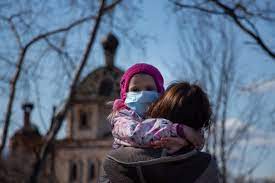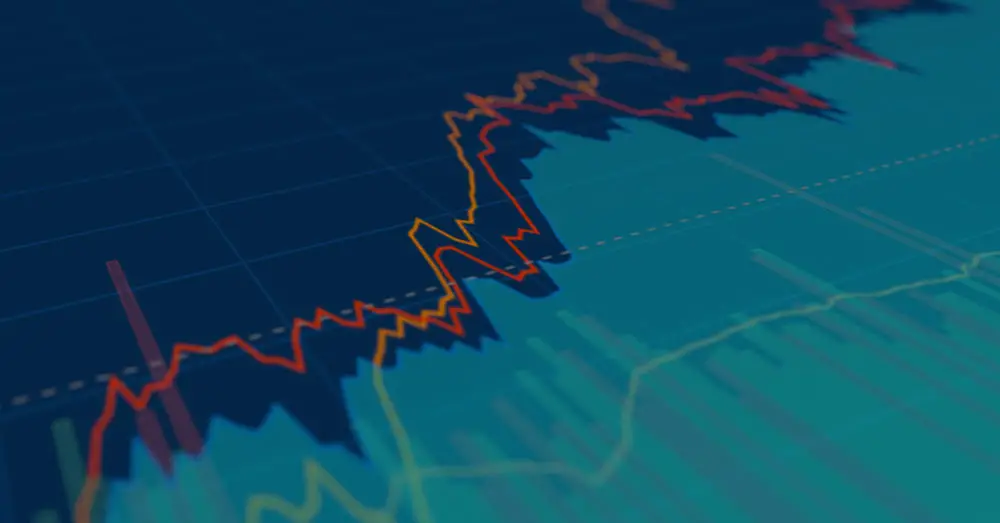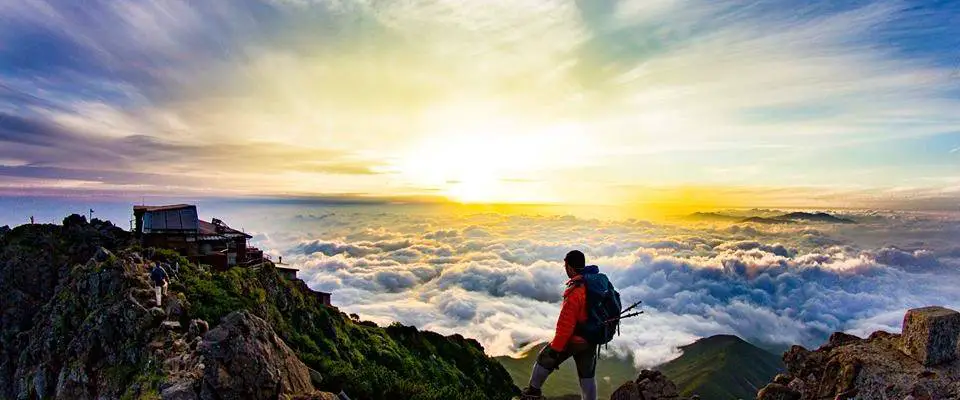Sharing an insightful article that was written in 2020 during the height of the COVID-19 pandemic about the economy! It’s amazing how far we’ve come!
COVID-19 and the Global Economic Recession
We constantly hear about how COVID-19 has or will destroy the economy all the time. Terms like “global economic recession” and “industry shut-downs” are being used more and more as this pandemic continues to wreak havoc across the globe. Even if a large majority of society may not understand exactly what these terms mean, they’ve been used enough times to gather that it doesn’t indicate the situation is getting better, and they are terms you don’t generally want to hear every day on the television. But what much of society doesn’t know, is why these terms are being used. This is imperative to understand in order to identify how to make the situation better.
COVID-19 Pandemic and Restrictions
A significant part of understanding how the pandemic is impacting the economy, is understanding that the disease itself doesn’t directly hurt the economy. The measures that have been put in place to curb the pandemic, however, inflict much of the damage. The biggest culprit among these measures is the self-isolation (or staying home) that is taking place in many households right now. By staying home, and not going out as much, shops and restaurants are losing business and revenue, and may be forced to close permanently. Manufacturing industries that supplied these businesses are also losing money because the shops and restaurants are not buying their goods as much, since there are no customers. This spells trouble for countries like China and various countries in Southeast Asia, which relied on manufacturing as a major industry.

Travel and Affected Industries During COVID-19
The slowing down of travel is also causing many problems. Industries that rely on travel, such as aviation, cruise-ship, and other tourism focused businesses, have faced huge drops in revenue. In countries reliant on tourism as the largest industry, such as Italy, this could mean the entire country’s economy may collapse.
Oil companies are also in a crisis due to demand falling, which causes oil prices to lower substantially. This may again cause entire country’s economic collapse because certain countries like Saudi Arabia, are almost exclusively reliant on their oil industries. Many of these industries are looking to their governments for money to bail them out, and if the governments grant their wish, then the government will also face a loss of funds.
Jobs and Businesses During COVID-19
The job loss that you’ve likely heard so many statistics on is caused by these industries’ loss of revenue. When a business loses money, it can’t afford to pay its employees. So, they must fire many of their employees, because they simply don’t have the money to keep them. As so many businesses are losing money, so many employees are also losing their jobs, which means not just the people seated at the heads of big companies and industries, but also the average person that makes up the bulk of society, is facing financial losses, sometimes to an irreparable scale.
All in all, money is being lost in almost every industry, in certain governments, and throughout the middle class as well. But there are some industries that have experienced growth during this time. These industries tend to be internet-based, because with less in-person interactions, people are looking to the internet to entertain them. Businesses in online-shopping, video-chatting, and more are therefore doing pretty well. In addition, health care has been vital during the pandemic. Remote work has been booming.

Shut-Downs During COVID-19
In many countries, the number of cases of COVID-19 has been falling recently, most likely due to the shut-downs occurring across the globe. Therefore many countries have plans, or have initiated their plans, to re-open the economy. This is typically happening in phases. In many cases, like Spain, the federal government oversees the first couple phases, and then transfers most of the power to regional governments in the last phases, to allow the overall situation to get better before protected measures are reduced by a greater degree. In other countries, like the USA, the state governments have the most say over all phases of re-opening, but the federal governments remains involved in most decisions. Generally, social distancing measures remain in place, but in most cases, citizens are allowed to leave their homes as much as they please. Local businesses are typically being allowed to open as we move forward, but there are limitations on capacity and face-masks are generally required.
COVID-19 and The Economy: Past, Present, and Future
The expected outcome of these gradually-lifting measures is that revenue increases, and industries restore stability. But, many in the medical community predict that cases of COVID-19 will spike back, and the re-openings will only serve to cause more damage. The world is walking a fine line currently between economic health and physical wellbeing, a small tip over into one side could be detrimental to the other, necessitating a higher understanding of the pandemic’s impact on the economy, before making a final decision on re-opening of the world.
Update: Now in 2023, the world and the economy have indeed changed dramatically!
Multiple Choice Practice Questions
Question 1: What was the primary effect of the COVID-19 pandemic on global economic activity?
A) Rapid economic growth in most industries. B) Minimal impact on international trade and tourism. C) Widespread economic contraction and recession. D) Increased investment and stock market stability.
Question 2: Which sector of the economy was particularly hard-hit during the pandemic due to lockdowns and restrictions?
A) Healthcare B) Technology C) Hospitality and tourism D) Agriculture
Question 3: What impact did the COVID-19 pandemic have on unemployment rates worldwide?
A) Unemployment rates remained stable. B) Unemployment rates decreased due to new job opportunities. C) Unemployment rates significantly increased. D) Unemployment rates increased only in specific industries.
Question 4: Which economic policy did many governments implement to mitigate the economic impact of the pandemic?
A) Decreasing public spending to maintain fiscal discipline. B) Reducing taxes on high-income individuals and corporations. C) Implementing austerity measures to control inflation. D) Introducing stimulus packages and financial assistance programs.
Question 5: What role did remote work play in the economic impact of the COVID-19 pandemic?
A) Remote work had no impact on the economy. B) Remote work led to increased productivity in all sectors. C) Remote work contributed to the decline of certain industries. D) Remote work had a positive impact on office real estate markets.
Question 6: How did the pandemic affect global supply chains and trade?
A) Supply chains and trade remained unaffected. B) Supply chain disruptions led to increased trade efficiency. C) Global supply chains experienced significant disruptions. D) Trade was unaffected, but supply chains were strained.
Question 7: Which industry experienced a surge in demand during the pandemic due to changing consumer behavior?
A) Entertainment and leisure B) Airline travel C) E-commerce and online shopping D) Movie theaters
Question 8: What impact did the pandemic have on government deficits and public debt?
A) Government deficits decreased due to reduced spending. B) Public debt remained unchanged throughout the pandemic. C) Government deficits increased due to decreased tax revenue and increased spending. D) Public debt decreased due to economic growth and increased tax revenue.
Question 9: How did the COVID-19 pandemic affect the global tourism industry?
A) Tourism experienced a boom, with increased travel and revenue. B) Tourism was unaffected by the pandemic. C) Tourism suffered a severe decline due to travel restrictions and lockdowns. D) Tourism saw an increase in luxury travel and high-end bookings.
Question 10: What impact did the pandemic have on global economic inequality?
A) Economic inequality decreased due to government interventions. B) Economic inequality remained static throughout the pandemic. C) Economic inequality increased as vulnerable populations were disproportionately affected. D) Economic inequality was eliminated due to global cooperation.
Answers and Explanations
Question 1: What was the primary effect of the COVID-19 pandemic on global economic activity?
Answer: C) Widespread economic contraction and recession.
Explanation: The COVID-19 pandemic led to widespread economic contraction and recession as lockdowns, travel restrictions, and decreased consumer spending negatively impacted various industries.
Question 2: Which sector of the economy was particularly hard-hit during the pandemic due to lockdowns and restrictions?
Answer: C) Hospitality and tourism
Explanation: The hospitality and tourism sector was severely affected by lockdowns and travel restrictions as hotels, restaurants, airlines, and tourism-related businesses faced significant declines in demand.
Question 3: What impact did the COVID-19 pandemic have on unemployment rates worldwide?
Answer: C) Unemployment rates significantly increased.
Explanation: The pandemic led to widespread job losses as businesses closed or scaled down operations, causing unemployment rates to rise sharply in many countries.
Question 4: Which economic policy did many governments implement to mitigate the economic impact of the pandemic?
Answer: D) Introducing stimulus packages and financial assistance programs.
Explanation: Many governments implemented stimulus packages and financial assistance programs to provide financial support to individuals, businesses, and sectors affected by the pandemic-induced economic downturn.
Question 5: What role did remote work play in the economic impact of the COVID-19 pandemic?
Answer: C) Remote work contributed to the decline of certain industries.
Explanation: Remote work contributed to the decline of industries reliant on physical presence, such as office spaces, commuting, and commercial real estate.
Question 6: How did the pandemic affect global supply chains and trade?
Answer: C) Global supply chains experienced significant disruptions.
Explanation: The pandemic caused disruptions in global supply chains due to factory closures, transportation restrictions, and decreased production capacities, leading to supply shortages and distribution challenges.
Question 7: Which industry experienced a surge in demand during the pandemic due to changing consumer behavior?
Answer: C) E-commerce and online shopping
Explanation: E-commerce and online shopping experienced a surge in demand as consumers shifted their purchasing behavior towards online platforms due to lockdowns and safety concerns.
Question 8: What impact did the pandemic have on government deficits and public debt?
Answer: C) Government deficits increased due to decreased tax revenue and increased spending.
Explanation: Governments faced increased spending on healthcare and economic support programs while tax revenues decreased due to reduced economic activity, leading to larger budget deficits and increased public debt.
Question 9: How did the COVID-19 pandemic affect the global tourism industry?
Answer: C) Tourism suffered a severe decline due to travel restrictions and lockdowns.
Explanation: Travel restrictions, lockdowns, and fear of infection severely impacted the global tourism industry, leading to a significant decline in travel and tourism-related revenue.
Question 10: What impact did the pandemic have on global economic inequality?
Answer: C) Economic inequality increased as vulnerable populations were disproportionately affected.
Explanation: Economic inequality increased as vulnerable populations, including low-income workers and marginalized groups, were disproportionately affected by job losses and lacked access to resources during the pandemic, exacerbating existing inequalities.
Check out these popular articles 🙂
Circulatory System: Blood Flow Pathway Through the Heart
Ectoderm vs Endoderm vs Mesoderm
Circulatory System: Heart Structures and Functions
Ductus Arteriosus Vs Ductus Venosus Vs Foramen Ovale: Fetal Heart Circulation
Cardiac Arrhythmias: Definition, Types, Symptoms, and Prevention
Upper Vs Lower Respiratory System: Upper vs Lower Respiratory Tract Infections
Seven General Functions of the Respiratory System
Digestive System Anatomy: Diagram, Organs, Structures, and Functions
Kidney Embryology & Development: Easy Lesson
Autocrine vs Paracrine vs Endocrine: What are the Differences?
Their Eyes Were Watching God: Mule Symbol
Shoulder Abduction Muscles: Medical Anatomy and USMLE
Cell Membrane Dynamics: Flippase vs Floppase vs Scramblase
Cell Membrane Fluidity: Factors That Influence and Increase the Cell Membrane Fluidity
Psychology 101: Crowd Psychology and The Theory of Gustave Le Bon
Introduction to Evolution: Charles Darwin and Alfred Russel Wallace
An Overview of Shorthand: History and Types of Shorthand
Calculus: Two Important Theorems – The Squeeze Theorem and Intermediate Value Theorem
Copyright © 2023 Moosmosis Organization: All Rights Reserved
All rights reserved. This essay first published on moosmosis.org or any portion thereof may not be reproduced or used in any manner whatsoever
without the express written permission of the publisher at moosmosis.org.

Please Like, Share, and Subscribe to our Email List at moosmosis.org, Facebook, Twitter, Youtube to support our open-access youth education initiatives! 🙂
Categories: Creative Writing, Economics, education, environment, health, History, humanities, politics, Social Studies













Great points and essay!
LikeLiked by 1 person